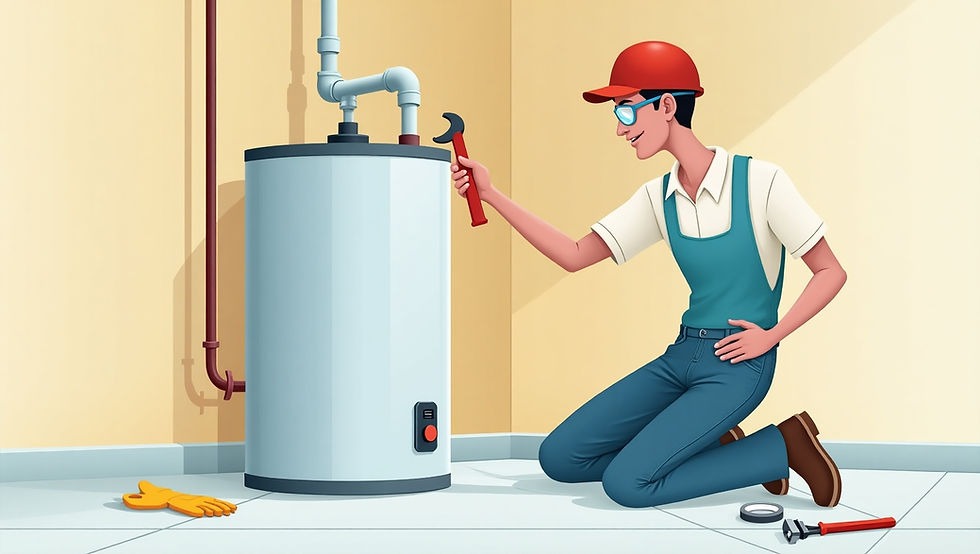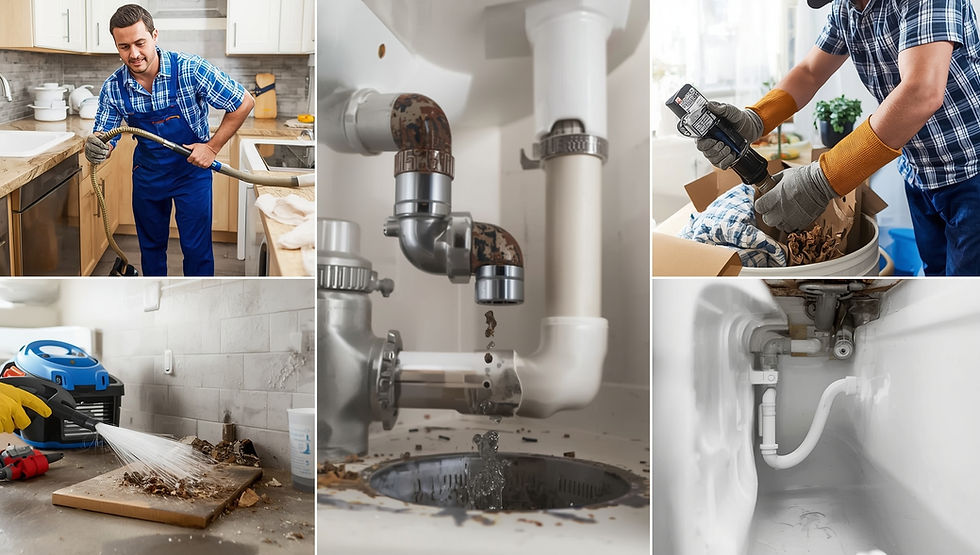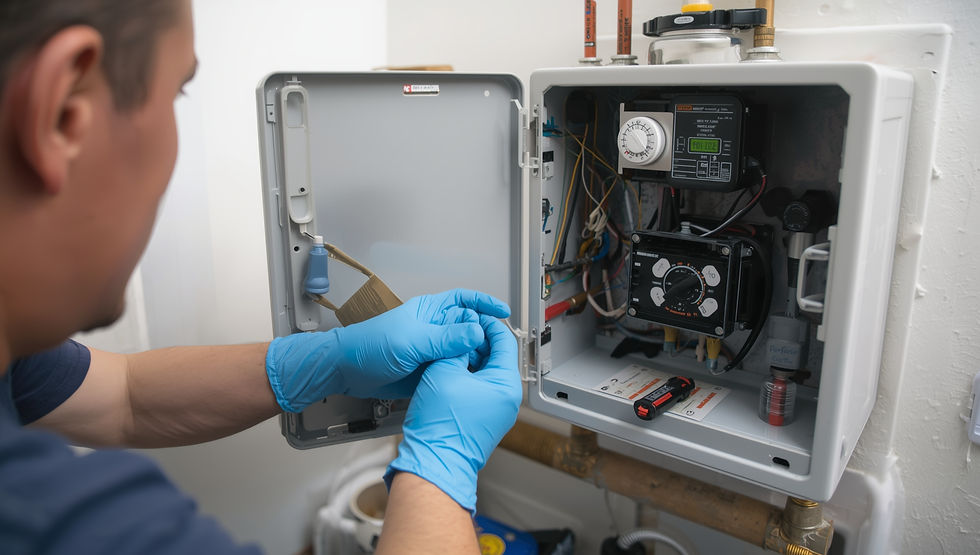How to Install a Hot Water Heater: A Simple Guide
- bradleyserranomark
- Jul 7
- 3 min read
A hot water heater helps your family have warm showers, wash dishes, and do laundry. Installing a new water heater the right way keeps your home safe and saves money. This guide will show you how to install a hot water heater step by step.
What Type of Hot Water Heater Do You Need?
Before you install a water heater, know which type you have. There are two main kinds: tank and tankless.
Tank water heaters store and heat many gallons of water.
Tankless water heaters heat water only when you need it.
Water heaters can use gas or electric power. Many people search for best water heater for home or gas vs electric water heater to decide which works best.
Tools and Materials You Will Need
You need the right tools for hot water heater installation. Here is a list:
Pipe wrench
Pipe cutter
Plumber’s tape
Solder kit (for copper pipes)
Screwdrivers
Flexible hoses
Shut-off valve
New pipes and fittings
Safety gloves and goggles
Having these ready makes your job faster and safer.
Safety First: Things to Do Before You Start
Safety is very important. Always follow water heater installation safety steps:
Turn off the power at the breaker if you have an electric heater.
Shut off the gas supply if you have a gas heater.
Turn off the main water supply.
Drain your old hot water heater if you are replacing it.
Wear gloves and goggles.
How to Remove the Old Water Heater
If you are putting in a new heater, first take out the old one:
Turn off power and water.
Connect a hose to the drain valve and drain all the water out.
Disconnect pipes and wiring carefully.
Remove the old heater with help if it is heavy.
How to Install a New Hot Water Heater: Step-by-Step
Now you are ready to install your new hot water heater. Follow these steps:
Position the Heater Put the new heater in place. Make sure it is level and there is room around it for repairs later.
Connect the Water Supply Lines Use flexible hoses or pipes to connect the cold water inlet and hot water outlet. Wrap pipe threads with plumber’s tape to stop leaks.
Connect the Gas or Electric Supply
For a gas heater, connect the gas pipe and check for leaks using soapy water. If you see bubbles, tighten the connection.
For an electric heater, connect the wires as shown in the manual.
Install the Vent Pipe (Gas Only) A gas water heater needs proper venting to remove harmful gases. Install the vent pipe to go outside your home.
Fill the Tank Open the cold water valve. Let the tank fill up. Open a hot water faucet to let out air.
Turn It On When the tank is full, turn the power or gas back on. Set the thermostat to 120°F for safe hot water.
Testing and Final Checks
After installing a hot water heater, check everything:
Look for leaks at all pipe connections.
Make sure the gas or power works well.
Check that the water heats up.
Test the pressure relief valve for safety.
Avoid These Common Mistakes
Here are some water heater installation mistakes to watch for:
Do not mix up hot and cold lines.
Do not skip venting a gas heater.
Do not forget to check for leaks.
Never ignore safety steps.
When Should You Call a Professional?

Sometimes it is better to hire a pro. If you feel unsure, hire professional water heater installation services. They can handle gas lines, wiring, and permits. This keeps your family safe and makes sure your water heater installation follows local codes.
How to Take Care of Your New Hot Water Heater
Your job is not done after you install your heater. Good water heater maintenance helps it last longer:
Flush the tank once a year to remove dirt.
Check pipes and valves for leaks.
Test the pressure relief valve.
Keep the area around the heater clean.
Conclusion
Now you know how to install a hot water heater. Follow each step, use the right tools, and stay safe. If you do not feel ready, call a trusted plumber for help. A good installation means hot water when you need it and peace of mind for your home.




Comments